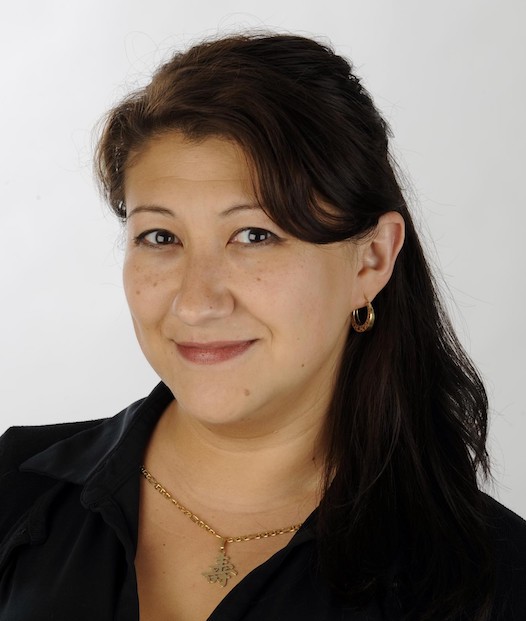That number, which comes from a 2021 study by Project Oasis, a consortium that studies digital media startups, is one data point that has given hope to many in the industry. “The field is experiencing tremendous growth,” the study notes, adding that more than 50 new startups have launched each year on average. “Publishers operate in a challenging financial environment, but the field is making progress. One in five publishers believe their organization has reached sustainability and another two in five say they are heading in that direction.”
And there are other glimmers of hope: In September, the national Press Forward coalition pledged more than $500 million to re-energize local news.
These might sound like positives for a news industry that sings a lot of dirges: As media scholar Penny Abernathy, a professor at the Medill School of Journalism, wrote in in the State of Local News 2022 report, since 2005, “the country has lost more than a fourth of its newspapers (2,500) and is on track to lose a third by 2025.”
More than 70 local newsrooms launched during the pandemic years of 2020 and 2021, according to Abernathy, but challenges remain. Startups have been concentrated around metro areas. Lower-income regions are less likely to see a replacement when their local outlets fold, Abernathy says. And “what really worries me about the digital startups is how we’ve been stalled right around 550,” she adds, noting that for practically each fledgling enterprise, another flames out.
There are three things that Abernathy’s research pinpoints as contributing to news startup success: Launching in a market that is either growing demographically or has average or above-average economic growth prospects; local ownership attuned to community needs; and “capital to get through the next five years, because you’re going to experiment a lot, and not all experiments are going to work.” If an outlet can make it to that fifth birthday, she says, it’s far likelier to make it to the tenth.
Even if a new outlet starts small, experts say that it still needs to direct resources to the business side of the operation.
“If you only have two people, it shouldn’t be an editor and a reporter. It should be an editor and a business person,” says Steven Waldman, founder and president of Rebuild Local News. “If you get some grants, view it as a temporary bridge and use it to build out a more enduring small-donation or other kind of revenue strategy.”
But success in local news looks different across outlets and communities. “Whenever anybody says, ‘What’s a good example of a local startup?’ or ‘What’s a good example of a non-profit that’s really made it?’ [the] answer is always really gray, right?” says Tim Griggs, founder of Blue Engine Collaborative, an organization that offers coaching and advice to media companies. “[If] you draw inspiration from lots of folks, you’ll be good.” For inspiration in a tough business, Nieman Reports spoke to recently launched news outlets about the diverse pillars that are helping them make it work.
Experienced, respected local leadership: Cardinal News
Dwayne Yancey worked at Virginia’s Roanoke Times for 39 years, ultimately rising to editorial page editor.
Over time, the paper cut back. In 2021, “We were told flat out: There would no longer be capacity for any in-depth reporting. Okay, you know, appreciate the honesty,” he deadpans. He wondered if he could start something of his own — maybe a Substack.
Around the same time, Luanne Rife, who specialized in health coverage, took an early retirement after 16 years at the Times.
“Very quickly, [we] joined forces,” he says, to create Cardinal News, a nonpartisan nonprofit covering the western third of Virginia. Yancey is the executive editor; Rife, executive director and chief development officer.
The Institute for Nonprofit News said they’d need “at least $350,000” to make a go of it. The duo raised the seed cash in about three months, most in chunks of $100,000 from outfits like Virginia-based utility Dominion Energy and hospital operator Carilion Clinic.
“[We] have some seniority… Important people would take our calls. If we were 25 years old and didn’t know the big players in the community, we couldn’t have done it — or we’d have had to do it completely differently.” — Dwayne Yancey, executive editor of Cardinal News
“It wasn’t like we were out holding bake sales… [It was] based on people we knew,” Yancey says. “Not to brag, but [we] have some seniority… Important people would take our calls.” Looking back, “if we were 25 years old and didn’t know the big players in the community, we couldn’t have done it — or we’d have had to do it completely differently.”
The power of Yancey and Rife’s tenure in Virginia media carried over to the editorial side in both reporting and hiring: “Everybody in politics in Virginia knows who we are,” he says. “We do not have to promote ourselves to that community, other than doing good work.”
Focused mainly on politics and business, by fall 2023, Cardinal had grown from two reporters to seven, with money for an eighth. They don’t hire unless the job is funded for three years. “We have no physical office. We try to pay people well, but try to be cheapskates on everything else,” Yancey says. The site won 2023 first-place financial health honors from LION for having quadrupled its starting budget and reached its five-year goals in just 18 months.
Cardinal was the only news organization to investigate a threatened mass eviction of tenants on fixed incomes, says Yancey. The outlet has also documented flash floods that devastated the southwest of the state and has probed the legality of “adult share” marijuana businesses.
People are paying attention: After launching in September 2021 with 600 subscribers to one newsletter, three years later Cardinal had 18,000 unique subscribers to five. By July 2023, the website had 1.9 million page views and 1.2 million visitors per month.
“In the beginning, the people putting up money [were] reacting to our reputations that, ‘Oh, okay, these are serious people. We think they can do this,’” Yancey says. “Now, we build that reputation every day with our work.”
An unapologetic voice for marginalized communities: The Kansas City Defender
“With an empty pocket, no journalistic background, and no Plan B, The Kansas City Defender was born in July 2021,” Ryan Sorrell writes in a two-year retrospective on the news outlet he founded as a “abolitionist, radical, unapologetic and community-led” local counterpoint to white-dominated corporate media.
The Kansas City Defender deliberately draws no bright line between reporting and activism. “We don’t pretend to be objective. As we like to say, we’re biased towards justice,” says Sorrell, who’s got a background in community organizing. “The Black press has always been a press of advocacy.”
As its reporting capacity grew, the outlet focused on racial discrimination and inequity within Kansas City schools — including an episode in which students signed a petition to bring back slavery. “We’ve had a lot of students say that they’ve been dealing with racism for months, [and] the administration has done nothing, and [they] feel like they have no other choice but to come to us,” Sorrell said.
More recently, the Defender has also reported on the investigation of bigotry and misogyny at the Kansas City Fire Department, the segregationist history of the landmark Country Club Plaza, race-based harassment of Black student-athletes, and conditions at a rental building “swarming with roaches, bedbugs, and mice.” It’s also focused closely on Kansas Citians like Ralph Yarl, a Black teen shot by a white man after he rang the wrong doorbell in the spring of 2023.
“We don’t pretend to be objective. As we like to say, we’re biased towards justice. The Black press has always been a press of advocacy.” — Ryan Sorrell, founder of The Kansas City Defender
In the early days, Sorrell — who had quit his PR job and was living with his parents — started with an Instagram account and a small email newsletter: “I was being honest and vulnerable and being like, ‘I don’t have no money. Can y’all please help me if you believe in the work that we’re doing?’” A supporter came to his aid with funds for gas, food, and the six-month rental of a Canon Mark IV camera.
The Defender kept reporting as mainstream outlets “would just steal our work,” according to Sorrell, reporting information had “emerged on social media” rather than attributing it to his outlet. But as of this fall, he says, the Defender had hit more than 50 million social impressions, been cited by the Washington Post, New York Times, CNN, and AP. It has also garnered recognition from the Local Media Association, Southern Christian Leadership Conference, and INN.
The Defender’s coverage has had an effect on the way other media cover local issues, Sorrell says. “We certainly saw a dramatic increase in the amount of coverage of racism in schools” he said. “We’ve seen a lot more of the news outlets here take bolder stances against the racist policing that exists here in our city.”
With the non-profit Defender, Sorrell has always been mindful of ways to connect with its audience. From the start, “Anywhere that there were Black people in the city, we were there and talking and building relationships and trust with people in the community [and] not asking them for anything.” The Defender, which also features arts, music, and restaurant coverage, has a strong community service component that’s included a “grocery buyout,” paying for Black customers’ purchases at a local market. “These types of events are vitally important to us because we aren’t only a news outlet, we are a community organization that is actively committed to building directly alongside and showing love to Black people and our community,” the Defender wrote at the time of the first buyout in October 2022.
The Defender’s social-first approach has netted nearly 33,000 Instagram followers, more than 28,000 followers on TikTok, and about 10,000 on X.
“Decades ago, it would’ve been impossible to compete with the multimillion-dollar budgets of the legacy TV and news outlets,” Sorrell says. “But [in] our first three months, we were outcompeting [them] — and all we had was an Instagram page and $0 in actual funding.”
Unswerving focus on a single mission: Spotlight PA
Back when Chris Baxter worked for the Newark Star-Ledger, his boss used to say daily and viral stories were “how we paid our taxes. That’s how we bought our ticket to entry to be able to do what you wanna do. And I get the concept,” he says. “The problem is that if that center of gravity and identity is not strong, then all that other noise takes over — and it suffocates the real impactful work and [what] you bring to the table for the community.”
From Spotlight PA’s 2019 inception as a source of investigative, public service journalism, “I was very clear: This is not your typical State House bureau. [We] are not doing all the turn of the screw coverage,” says Baxter, the president and CEO. “We’re going to focus on what you might think more traditionally of as that ‘second-day story’ — more of the ‘why’ and why it matters.”
“The more people that get involved in our government, in our democracy, the more people who vote, the better” — Chris Baxter, president and CEO of Spotlight PA
Spotlight PA offers a range of deep dive and quicker-turnaround pieces, relentlessly focused on government accountability. It adheres to the guiding principle that its reporting should not only inform people but engage them in public policy.
“The more people that get involved in our government, in our democracy, the more people who vote, the better,” Baxter says. “We don’t care who you vote for, we don’t care what the issue is. But we want more people to get engaged. And we’re not afraid of any of those things.”
Spotlight PA’s mission is so keenly focused that it has chosen to not even cover Pennsylvania’s federal delegation — at least for now. “We know that there are vastly fewer resources put into statewide races, appellate court races, [than] there are nationally,” Baxter says. “We go where we think we can have the most impact.”
To illustrate impact, Baxter often refers to a 2021 investigation that revealed the state Department of Labor had overcharged unemployed Pennsylvanians millions in interest for a decade — and covered it up. The first story hit in July. By September, the state had started paying back what it owed to more than 22,000 people. “That one story returned $19 million to the public,” he says.
Other Spotlight PA investigations have delved into compassionate release for elderly inmates, the opacity of the legislature’s spending records, and a flawed state mortgage assistance program.
The intense focus extends to the operating model of Spotlight PA, a nonprofit powered in part by multimillion-dollar investments from the Lenfest Institute and American Journalism Project. It has a website, but Spotlight PA’s work also appears in a plethora of Pennsylvania outlets — free of charge to them — from the Altoona Mirror to Gettysburg Times to the York Daily Record. That lets Spotlight PA spend more time chasing the news and less chasing an audience.
Spotlight PA has experimented with other ways to reach readers. One newsletter called PA Local covers the “incredible people, beautiful places, and delicious food” of Pennsylvania. Baxter says it fits into the mission of Spotlight PA “because we know that to have a healthy relationship with people, we can’t just shove oatmeal down their throats every single day.”
“To me, that is fundamentally different than doing all of that from the start, because we’re only doing that as a strategy to support [the] core identity of the work. We’re not changing the mission,” he stresses. “If you start with the core identity, as we did, it doesn’t preclude you from expanding out strategically later, but then all of it is centered around [your] center of gravity.”
Openness to non-traditional — and diverse — startup reporting: The Charlotte Ledger
Tony Mecia is the kind of local newsman who’ll describe a rezoning meeting as “really hot.”
“They were basically accusing a city council member of taking bribes and getting paid off by developers [and saying] it’s gonna [worsen] traffic and kill the bald eagles,” he says. “People are super passionate, [and] so it’s like, ‘Okay, can [we] bring some clarity to that?’”
It’s the kind of local story The Charlotte Ledger, which Mecia founded in 2019, can really get into.
Mecia had watched his former paper, the Charlotte Observer, try to transition from print to digital. He looked at national outlets’ newsletter successes and wanted to try it in a local market. “On a lark,” he fired up a Substack.
With a newsletter format, “You’re not relying on people having a habit of going to a website. … You’re living in their inbox. Maybe [it’s] a little bit hard to get people to give you their email addresses. But once you’re there, they’re sort of opted in,” Media says. “The key is [to] make sure [you’re] respectful of their time and that you are providing information that they can’t get anywhere else.”

Klaus Kremmerz
Work Mecia is proud of as executive editor includes a five-part series on teen mental health; coverage of the state’s takeover of a financially troubled retirement community; and an attention-grabbing scoop on a potential passenger rail line.
Going with the “write what you know” approach, Mecia started out with business coverage, a focus of his dozen years at the Observer. The Ledger, with a staff of three plus freelancers, now has four newsletters.
Besides the flagship, there’s Transit Time, aimed at “Charlotte people who leave the house” and produced jointly with local NPR station WFAE. Fútbol Friday covers Charlotte FC, the new pro soccer team. And Ways of Life is an obituary newsletter featuring “inspiring, thought-provoking and often-heartwarming stories of people in our community.”
All — plus a podcast — focus on Charlotte and surrounds in different ways. “If we can expand the different categories of coverage in newsletters, we can reach some people that we might not have been able to reach,” Mecia says. “If we had just stuck doing, say, a business newsletter, which has relatively more narrow appeal, that’s a little bit tougher to grow. Maybe someone’s interested in the local soccer team, [and] that’s a way to draw them into the other newsletters that we offer.”
The Charlotte Ledger has some free and some paid products. As of fall 2023, Mecia said he had around 19,500 users on his list. About 2,600 pay. “I wouldn’t characterize it as rapid, off-the-charts growth — but it’s steady and it’s moving in the right direction.”
The Ledger isn’t the only newsletter in town: Axios Local bought the former Charlotte Agenda in 2020. Mecia says his audience skews older than that of Axios, which reports more than 70 percent of its readers are between 18 and 44. (In a nod to its demographic, the Ledger presents “40 over 40” awards.)
When it comes to media struggles, “What I’m seeing is that it’s not that people aren’t interested in the news — [it’s that] it hasn’t, in the last few years at least, been delivered to them in a way that is relevant to them,” Mecia says. “When you see people leaving, when you see circulation of newspapers declining, does that mean people don’t want to pay for local news — or that they don’t really like the [product]?”
Engaging the public to cover — and solve — problems: Mississippi Free Press
For too long, says Donna Ladd of the Mississippi Free Press, the media has had it backwards. “So many journalists and editors have thought that they have all the answers if people would just listen,” she says. “We’re the ones who [should] shut up and listen.”
Ladd and MFP co-founder Kimberly Griffin have baked a direct connection with Magnolia Staters into the work of the outlet they launched in March 2020 — just as Covid-19 was creating a shockwave of fear and isolation.
A big part of forging that connection was MFP’s solutions circles, group discussions on topics ranging from health care and education to violence, housing, corruption, and elections. It’s a deliberate rejection of the “expert panel” format that presumes to tell people about their own communities.
“At MFP, started by a Black woman and white woman from Mississippi, our goal is to really get people to talk to each other and to listen to each other,” Ladd says. “Potential story ideas emerge from these conversations. [What] I really like is that potential solutions emerge, because we really want our reporting to be solutions-driven.”
MFP doesn’t report verbatim on the circles, which began virtually and segued to an in-person format. Instead, they follow up with sources and build networks — not only with readers, but between them.
For example, “we were doing this project called Black Women and Covid that was actually looking at what Covid spotlighted in the lives of Black women and their families” and the systemic inequities that already existed, Ladd says.
The circles surfaced not only “a lot of the reasons that people were afraid of vaccination,” but also countered prevailing pandemic narratives, according to Ladd. “A number of Black women were saying, ‘The pandemic has actually helped me with my business,’ or ‘It’s helped me to decide to do something else.’ So there were all these angles of stories that we might not have thought about the same way.”
MFP, a nonprofit funded by donors and grants from groups like the American Press Institute, covers a wide array of big-ticket stories. Among them: Threats to voting rights, a state welfare-fraud scandal, and House Bill 1020, which lets state officials appoint unelected judges in the majority-Black county that includes the capital, Jackson.

Klaus Kremmerz
MFP had grown to 14 full-time staff by fall 2023 — all but one raised in Mississippi — with three more jobs advertised. “We’re growing very fast,” Ladd says — so fast she’s thinking of bringing print editions of MFP to select zip codes to combat the double-headed problem of news deserts and the digital divide.
And if someone asked why MFP puts this much energy into its circles instead of focusing solely on traditional reporting?
“I think what I would say back to them [is], ‘I bet you money I have more sources than you do [and] a more inclusive funder base than you do,’” she says. “And I bet you that I can show up in just about anywhere in this state and find people who trust me enough to talk to me, regardless of their political background, without me ever having to run three sentences of fake, both-sides, horserace reporting to try to prove that I am quote-unquote objective.”
That trust is at the heart of everything the Mississippi Free Press tries to achieve.
“If people [support] us and our approach to journalism that doesn’t literally talk down to them from a stage, then we can do more of what they want us to do,” Ladd says.
Correction: A previous version of this article incorrectly stated that Ralph Yarl died after being shot by a white man for incorrectly ringing his doorbell; Yarl had survived the shooting. The text has been updated.


